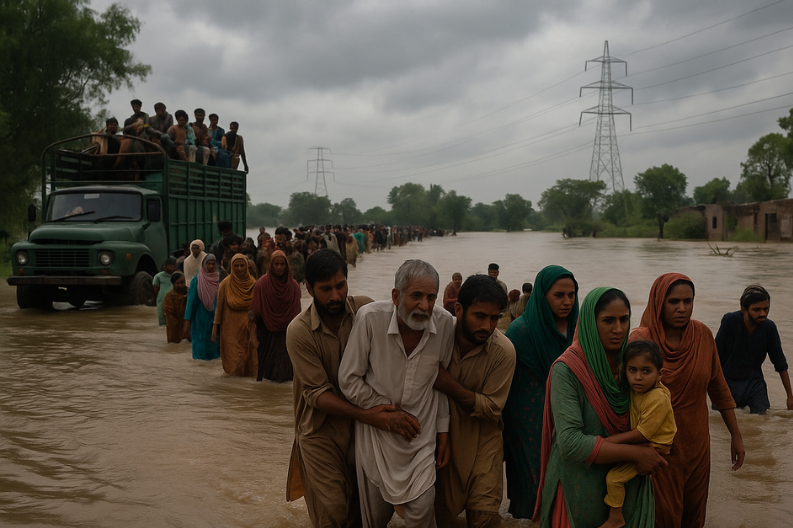LAHORE: Authorities in Pakistan confirmed mass evacuations as tens of thousands moved to safer areas after India released water from overflowing dams. Officials reported the developments on Tuesday. The heavy water flow is threatening low-lying border regions in Punjab. The move also marked the first public contact between the two nuclear-armed neighbors in months.
Pakistan’s National Disaster Management Authority (NDMA) issued warnings about rising water levels in the Sutlej River. They urged quick evacuations in several districts. More than 14,000 people left Kasur district, while over 89,000 relocated from Bahawalnagar near the Indian border. The NDMA told residents to avoid rivers and streams, cancel unnecessary travel, and follow alerts on media and their disaster app.
The crisis comes during heavy monsoon rains in both countries. In Pakistan’s northwest, flash floods killed more than 300 people in Buner district after a sudden cloudburst. Many victims lived near water channels and had not received warnings. Since June 26, seasonal floods across the country have killed over 800 people. In Indian-administered Jammu and Kashmir, at least 65 people have died. Homes, bridges, and roads suffered heavy damage as rivers overflowed.
India said most rivers were running above danger levels. Its Meteorological Department predicted more rain until Tuesday evening. The crisis has revived memories of 2014, when Kashmir saw its worst floods in a century that killed more than 500 people.
The disaster has also drawn attention to strained India-Pakistan ties. India shared the flood alert through diplomatic channels instead of the Indus Waters Commission. The 1960 Indus Waters Treaty created the commission to manage shared rivers. The pact has survived two wars and a border conflict, but tensions grew after India suspended cooperation following the killing of 26 tourists in Indian-controlled Kashmir. Pakistan argues that India cannot withdraw from the treaty on its own. Relations remain tense, with both sides trading missile strikes earlier this year before a U.S.-brokered ceasefire.
Scientists say climate change is intensifying monsoon rains in South Asia. Pakistan’s monsoon runs from July to September, but extreme rainfall in recent years has caused widespread destruction. The 2022 floods drowned one-third of the country and killed 1,739 people. With more rain expected, officials warn the crisis could worsen, pressing both nations to manage water resources more effectively.



